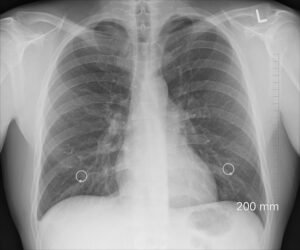Lung disease is a major global health concern, affecting millions of people worldwide. Whether it’s a chronic condition that limits daily activities or an acute illness that requires immediate attention, lung diseases can significantly impact quality of life.
This blog will guide you through understanding lung diseases, from their types and causes to treatment options and prevention strategies. By the end, you’ll have practical insights into taking proactive steps for lung health and managing life with lung disease.
What is Lung Disease?
Lung diseases refer to a variety of disorders that affect lung function, causing breathing difficulties or other related complications. They range from mild, temporary conditions to serious chronic illnesses requiring long-term management.
Around 65 million people globally live with chronic obstructive pulmonary disease (COPD), one of the leading causes of death, while millions more suffer from conditions like asthma and pulmonary fibrosis. Understanding and addressing these diseases is vital for quality healthcare and personal well-being.
Common Types of Lung Diseases
Lung diseases can be categorized into three main areas based on which parts of the respiratory system they affect. Here’s an overview of some of the most common conditions.
1. Obstructive Lung Diseases
These diseases obstruct the airflow in and out of the lungs, making breathing difficult. Examples include:
- Chronic Obstructive Pulmonary Disease (COPD): A progressive disease often linked to smoking or exposure to harmful particles.
- Asthma: A chronic condition causing airway inflammation, leading to wheezing and breathlessness.
2. Restrictive Lung Diseases
These disorders make it harder for the lungs to expand properly. Examples include:
- Pulmonary Fibrosis: Characterized by scarring in the lungs, reducing their elasticity.
- Interstitial Lung Disease (ILD): A group of conditions that cause long-term damage to lung tissue.
3. Lung Infections and Cancers
- Pneumonia: A bacterial or viral infection that inflames lung tissue.
- Tuberculosis (TB): A severe infectious disease caused by Mycobacterium tuberculosis.
- Lung Cancer: Often linked to smoking or exposure to harmful substances, lung cancer is one of the most lethal cancers worldwide.
Key Causes and Risk Factors
Understanding what contributes to lung diseases can help in both prevention and treatment.
1. Genetic Factors
Some individuals inherit a predisposition to lung disease. For instance, alpha-1 antitrypsin deficiency is a genetic condition that increases the risk of developing COPD.
2. Environmental Risks
- Pollutants: Long-term exposure to air pollution, chemicals, or secondhand smoke can damage lung health over time.
- Workplace Hazards: Jobs involving dust, fumes, or asbestos increase the risk of lung conditions like asbestosis.
3. Lifestyle Choices
- Smoking: The leading cause of preventable lung disease, including COPD and lung cancer.
- Sedentary Lifestyle: Lack of exercise contributes to poor respiratory function over time.
Recognizing Symptoms and Getting Diagnosed
Common Symptoms of Lung Disease
Symptoms can vary depending on the specific condition but may include:
- Persistent cough
- Shortness of breath, especially during physical activity
- Wheezing or chest tightness
- Fatigue or reduced exercise tolerance
- Frequent respiratory infections
Diagnostic Methods
If you suspect lung disease, consult a healthcare provider. Diagnostic procedures may include:
- Spirometry: Measures lung capacity and airflow.
- CT Scans or X-rays: Provide detailed lung images.
- Oxygen Saturation Tests: Assess how effectively your lungs deliver oxygen.
Early diagnosis can significantly improve treatment outcomes, so seek medical advice if you experience ongoing respiratory issues.
Treatment Options for Lung Diseases
Managing lung disease often involves a combination of medications, therapies, and lifestyle adjustments.
Medications
- Bronchodilators: Help open airways in conditions like asthma and COPD.
- Corticosteroids: Reduce inflammation and manage flare-ups.
- Antibiotics: Treat bacterial infections like pneumonia or TB.
Therapies
- Pulmonary Rehabilitation: Combines exercise, education, and support to improve lung function.
- Oxygen Therapy: Provides supplemental oxygen to individuals with advanced respiratory conditions.
Lifestyle Adjustments
- Quit Smoking: Quitting is essential to slowing disease progression.
- Balanced Diet: Nutrient-rich foods can boost immune health and lung function.
Prevention Strategies for Healthy Lungs
While some lung diseases can’t be prevented entirely, certain habits can minimize your risk.
1. Adopt a Smoke-Free Lifestyle
Smoking remains one of the most significant contributors to lung disease. Quitting significantly reduces the risk of conditions like COPD and lung cancer.
2. Protect Yourself from Air Pollution
- Limit outdoor activities during poor air-quality days.
- Use air purifiers indoors to reduce exposure to dust and allergens.
3. Stay Active
Regular physical activity improves overall lung capacity and efficiency. Activities like swimming, walking, or yoga can be particularly beneficial.
4. Get Vaccinated
Vaccines like the influenza vaccine and pneumococcal vaccine can prevent respiratory infections that strain the lungs.
Thriving with Lung Disease
Living with a lung condition doesn’t mean giving up on life’s joys. Here are some tips to improve your quality of life.
- Track Symptoms: Use a journal to monitor flare-ups and discuss them with your doctor.
- Seek Support: Join support groups or online communities for encouragement and advice.
- Practice Breathing Exercises: Techniques like diaphragmatic breathing help manage shortness of breath.
Remember, you’re not alone. With advances in treatment and resources, managing lung disease effectively is very achievable.
Your Questions Answered
Q. Is asthma a lifelong condition?
Yes, while asthma can’t be cured, it can be managed effectively with medications and an asthma action plan.
Q. Is lung cancer caused only by smoking?
Smoking significantly increases the risk, but other factors like genetics, radon exposure, and air pollution can also contribute.
Q. Can you reverse lung damage caused by smoking?
While lung damage from smoking can’t be fully reversed, quitting smoking can prevent further harm and improve lung function over time.
Q. Can exercise help improve lung disease?
Yes, regular physical activity strengthens the respiratory system and increases lung capacity, making it easier to breathe.
Take Charge of Your Lung Health
Lung health is essential for overall well-being. Whether you’re looking to prevent lung disease, manage symptoms, or improve your quality of life, taking proactive steps is key.
Start by making small changes like staying active, eating well, and avoiding pollutants. Regular check-ups with your healthcare provider also ensure that any issues are caught early.
Together, let’s ensure healthier lungs and a healthier you.



